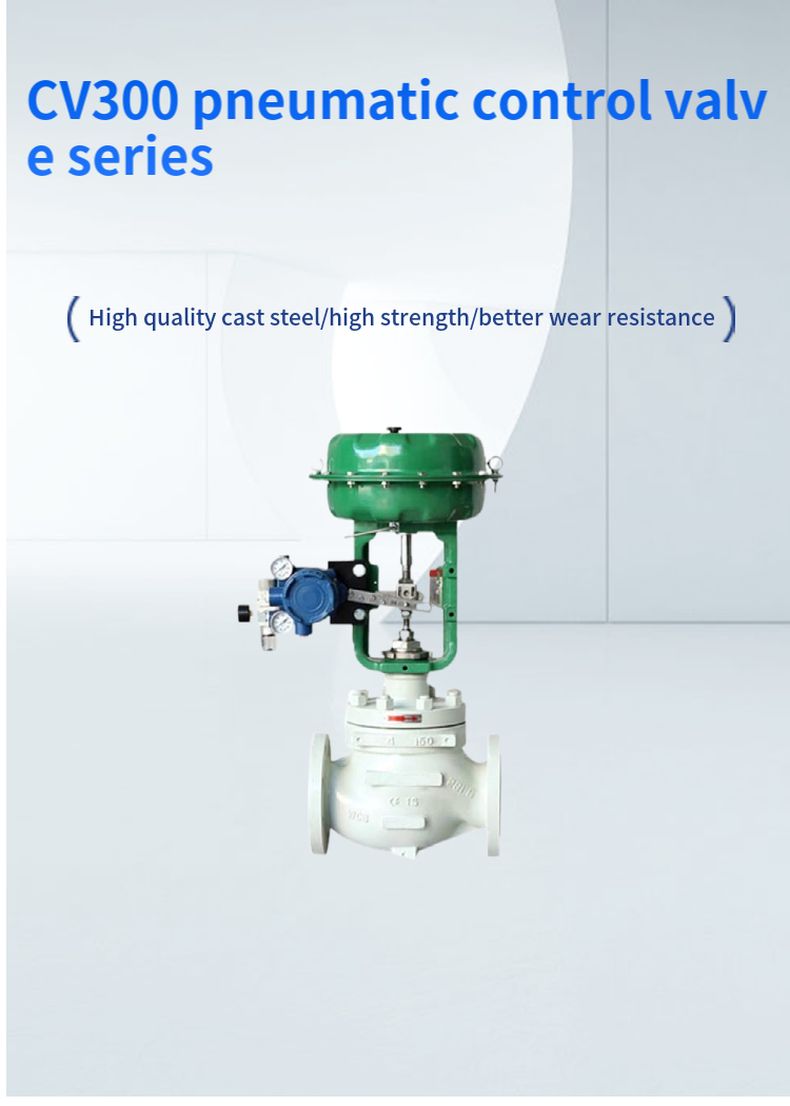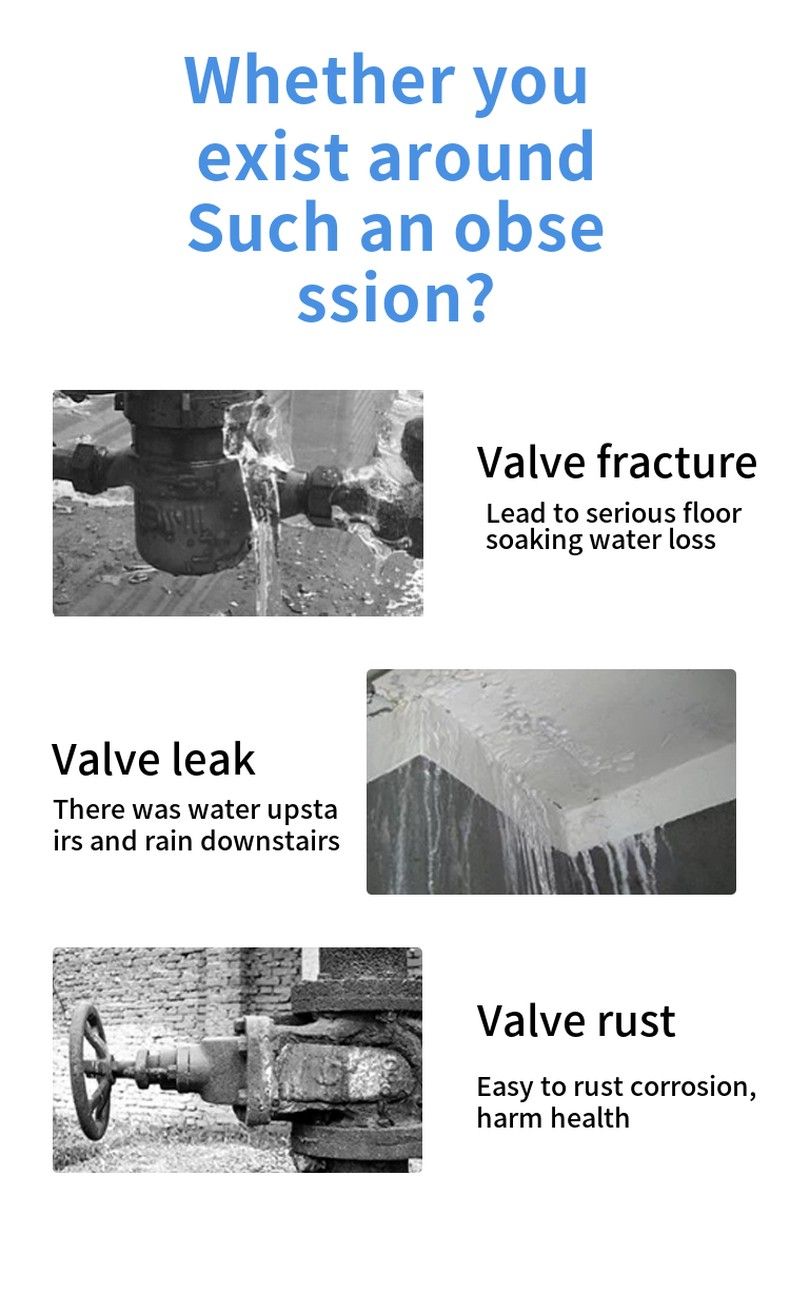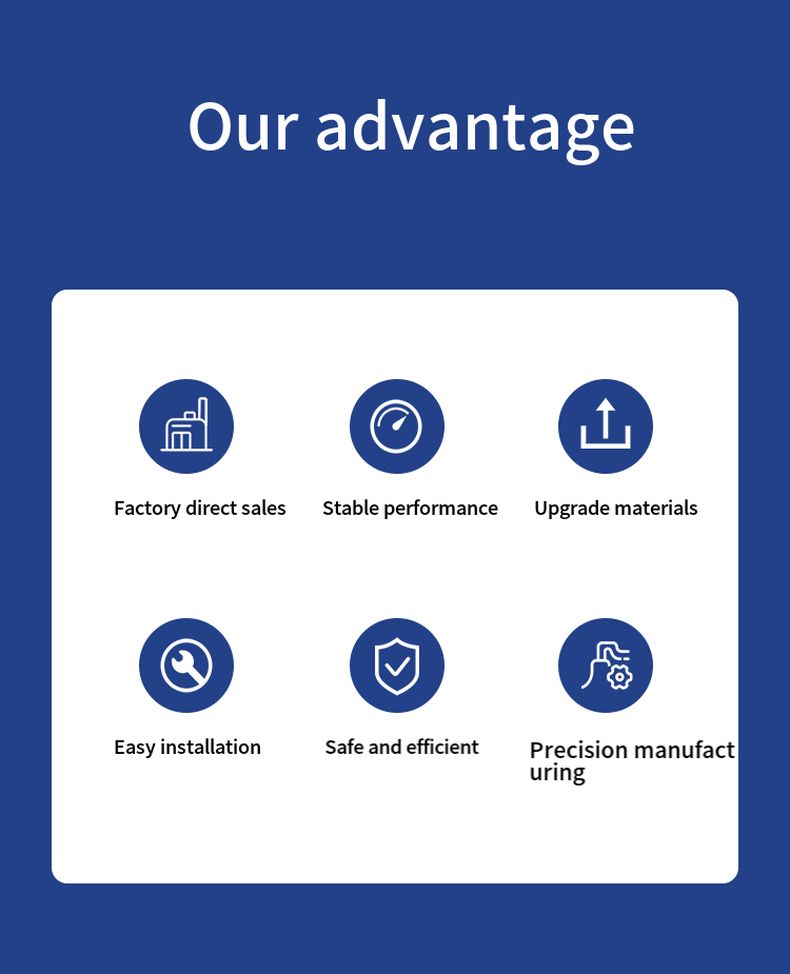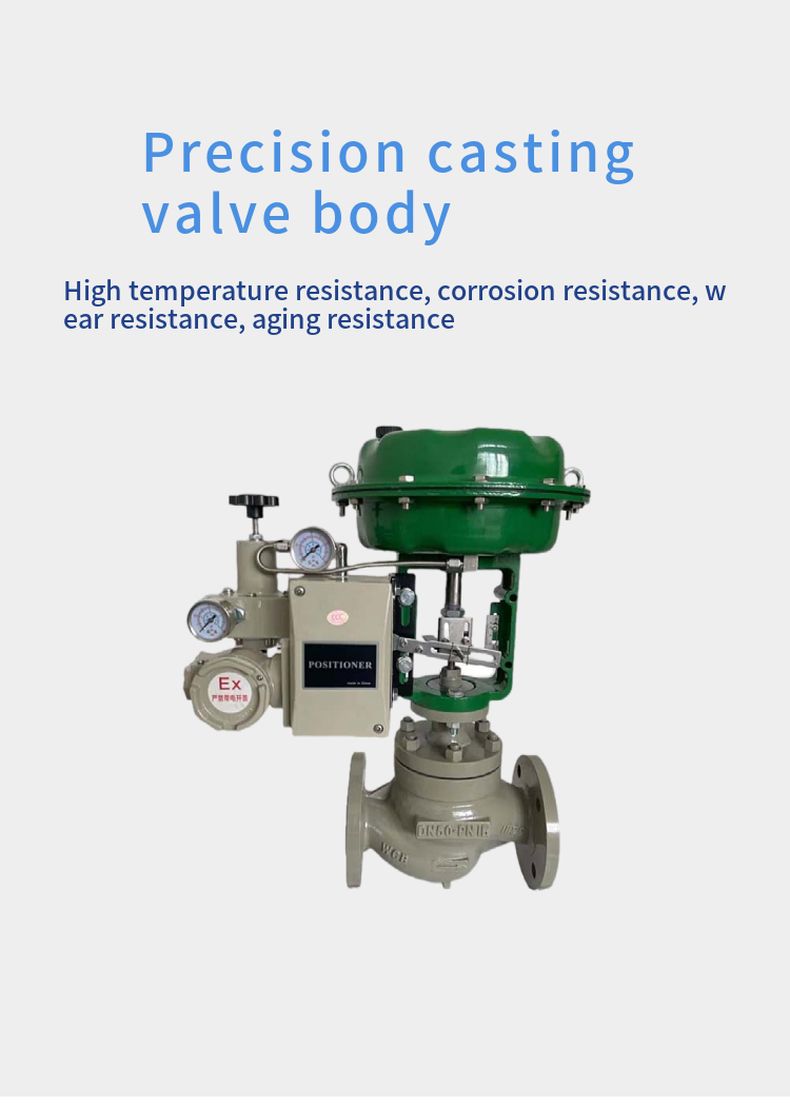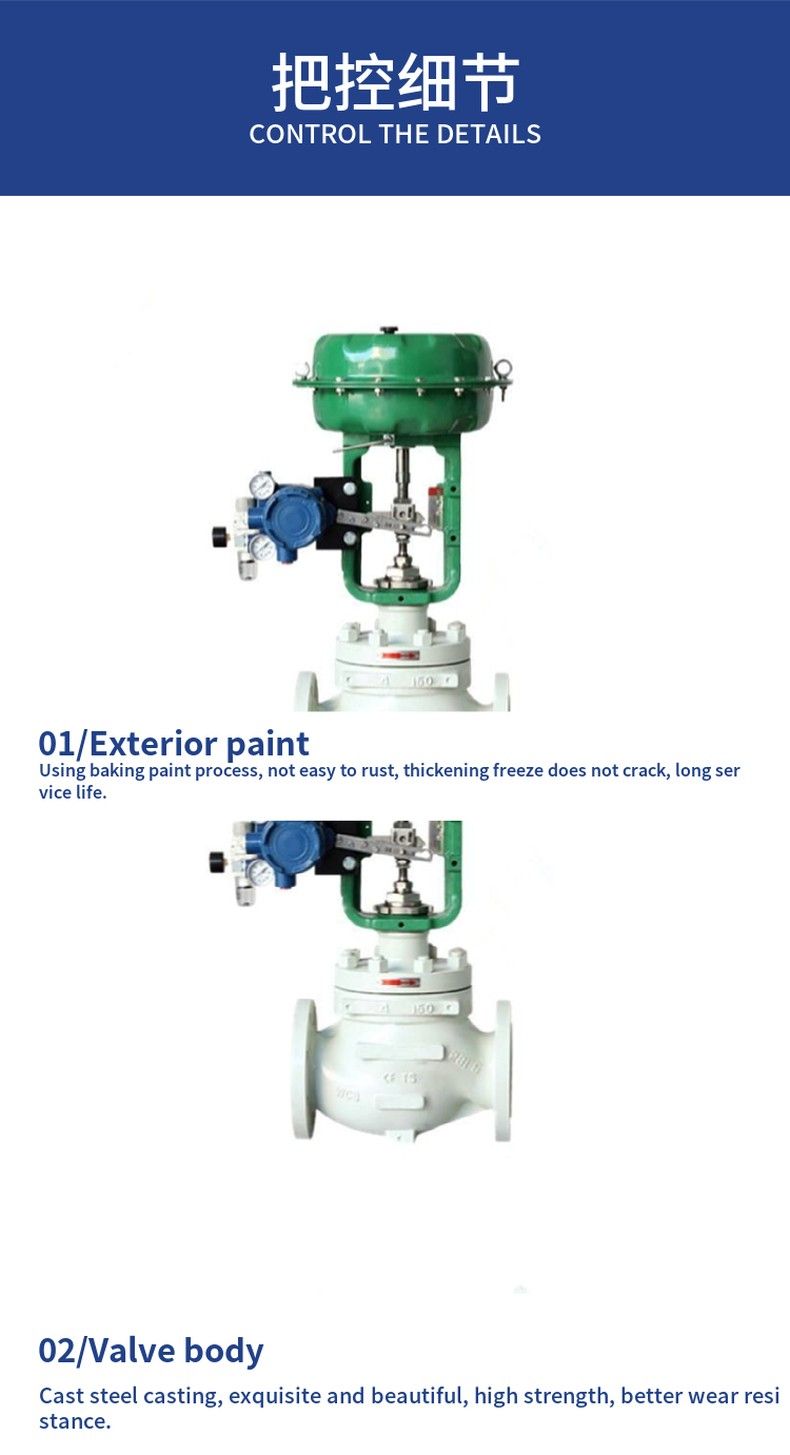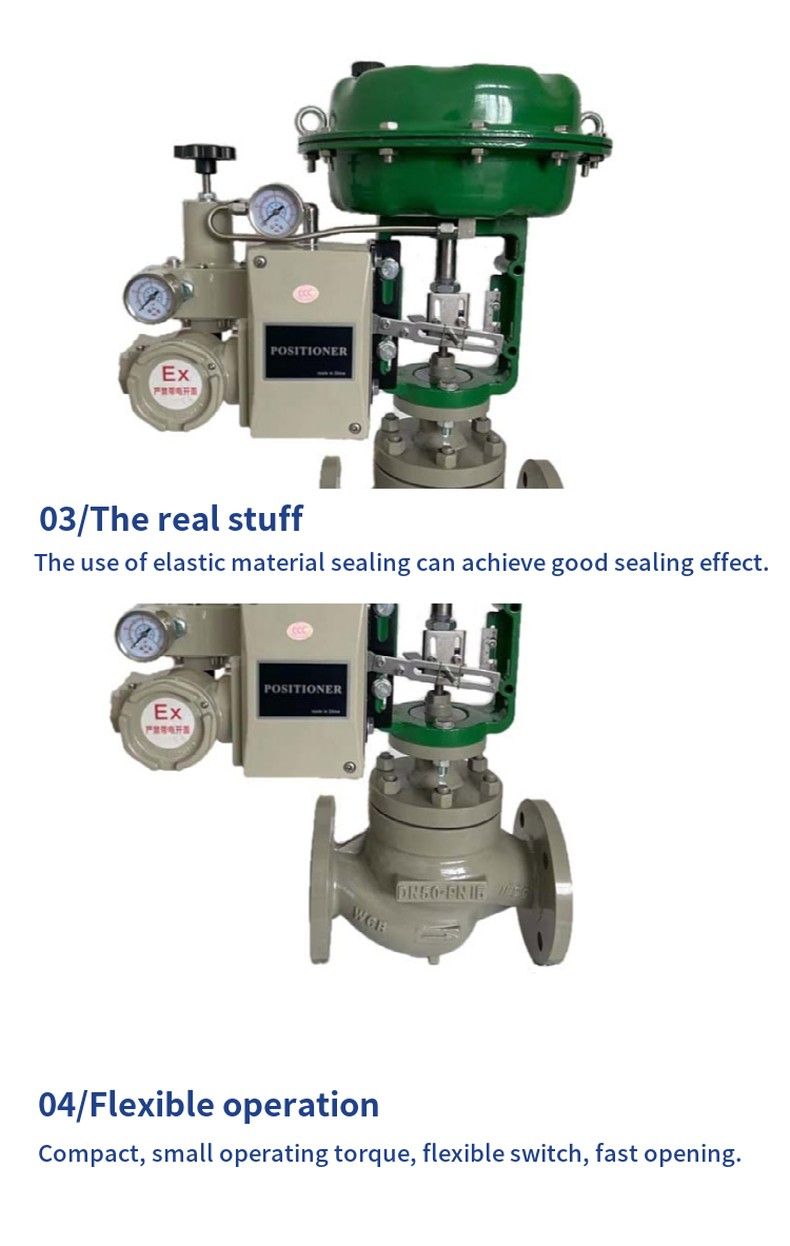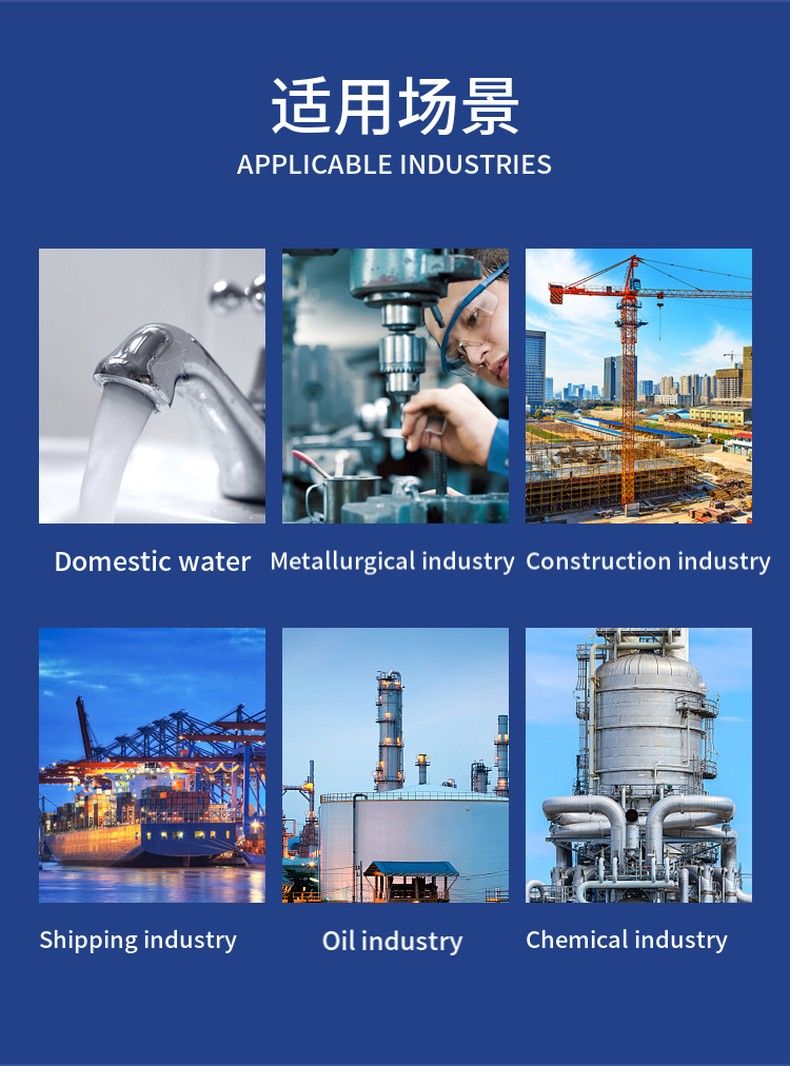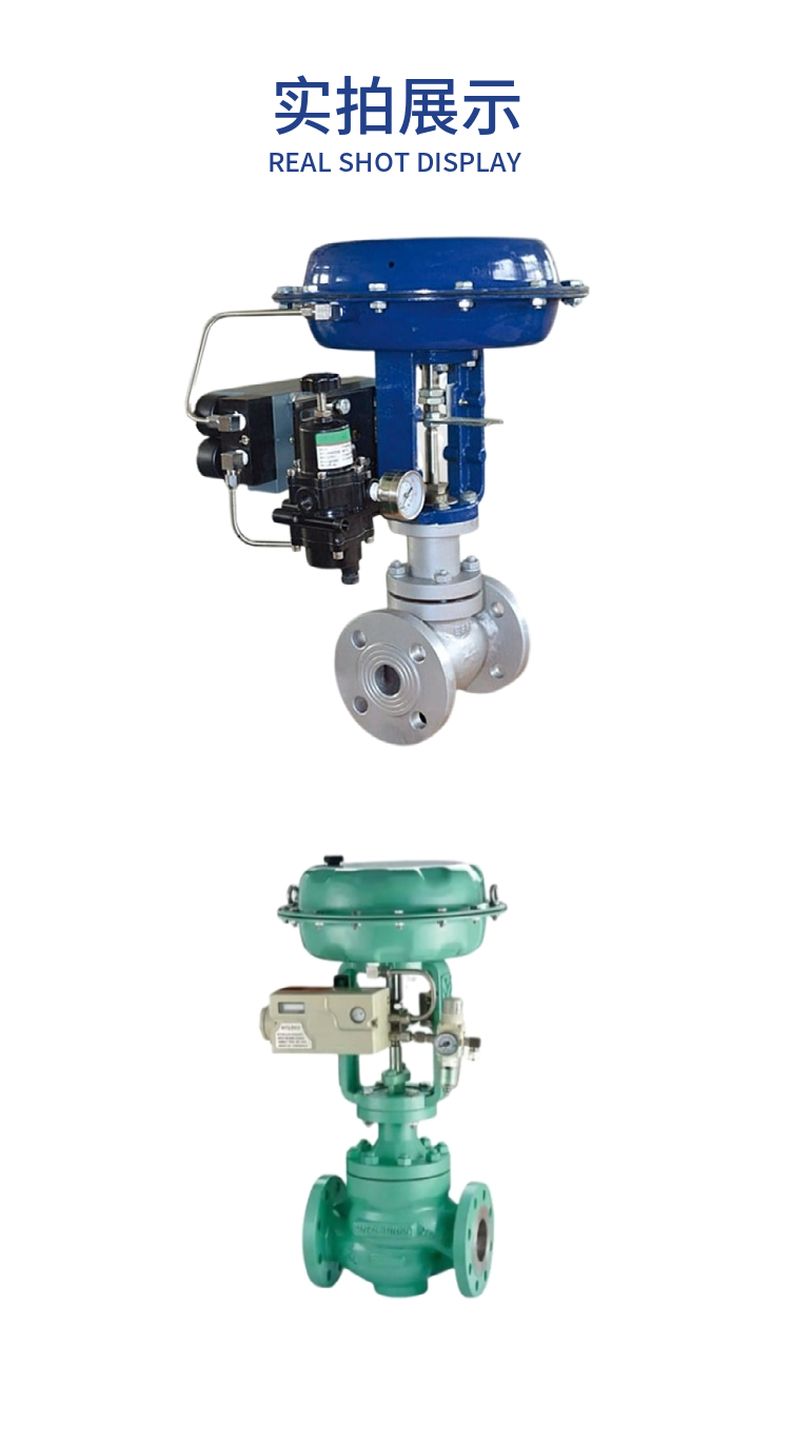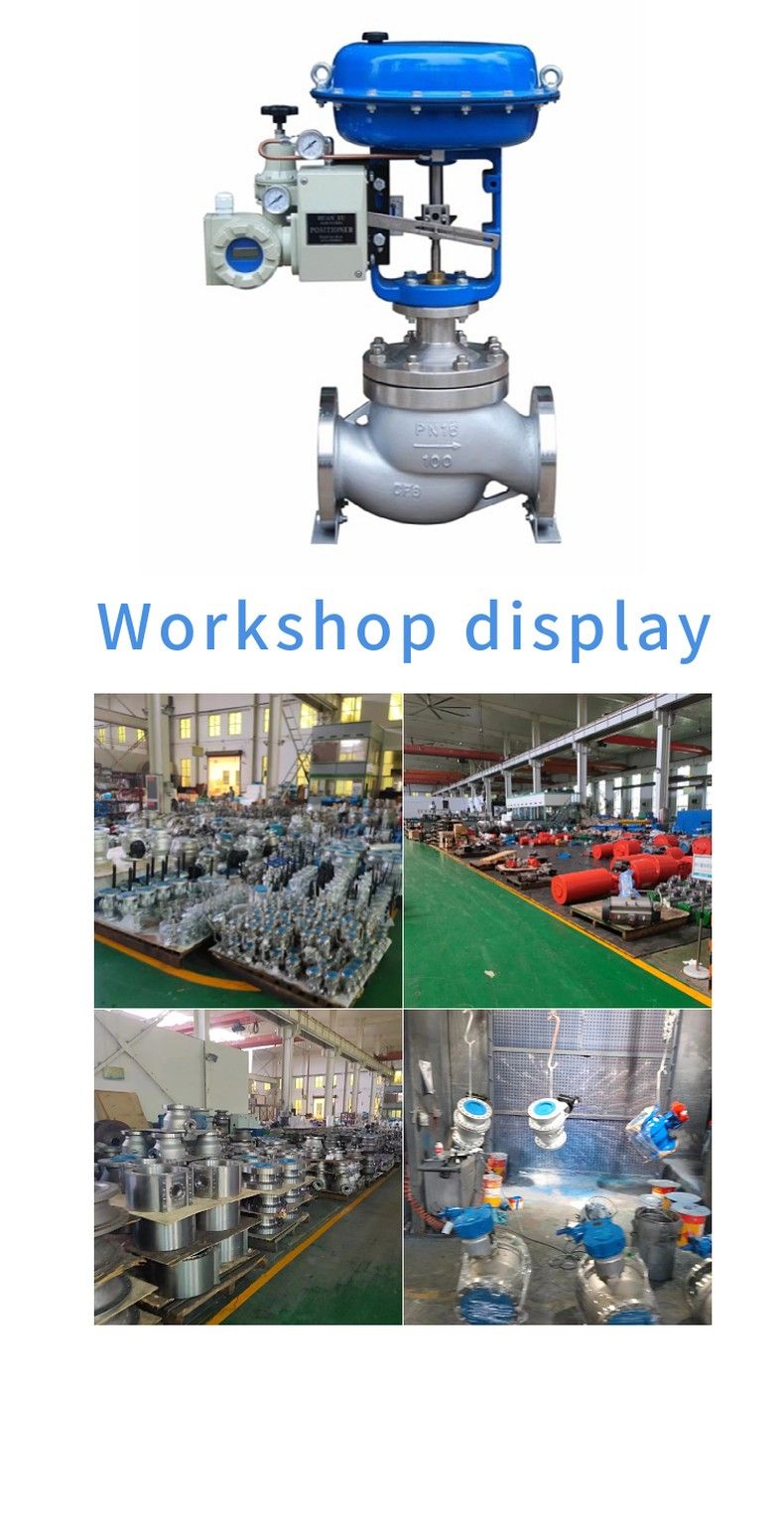Home >> Products >> Regulating valve
Electric control valve is an important unit instrument in industrial automation process control. With the increasing degree of automation in the industrial field, it is being used more and more in various industrial production fields. pneumatic control valveCompared with the traditional has obvious advantages: electric control valve energy saving (only at work to consume electric energy), environmental protection (no carbon emissions), fast and easy to install (no complex pneumatic pipeline and air pump workstation). percentageAccording to the power used by the actuator, the valve is divided into linear characteristics, equal characteristics and parabolic characteristics according to its function and characteristics
Main parts
Body, bonnet, packing gland, stem
Materials
Gray cast iron, cast steel, stainless steel
Input control signal
DC4-20MA or DC1-5V
The electric actuator and regulating valve are connected and assembled by mechanical connection, debugging and installation to form an electric regulating valve.
Parts materials: valve body, valve cover, packing gland, valve stem, valve disc, sealing ring, indicator, valve stem nut, nut sleeve
Material: gray cast iron, cast steel, stainless steel, brass
Power supply: DC24V,AC220V,AC380V and other voltage levels.
Input control signal: DC4-20MA or DC1-5V.
Feedback control signal: DC4-20MA (load electrical obstruction below 500 ohms)
By receiving the signal of the industrial automation control system (such as: 4~20mA) to drive the valve to change the cross-sectional area between the spool and the seat to control the flow, temperature, pressure and other process parameters of the pipeline medium. Realize the automatic adjustment function.
The new electric regulating valve actuator contains the feeding function, accepts the unified 4-20mA or 1-5V·DC standard signal, converts the current signal into the corresponding linear displacement, automatically controls the opening of the regulating valve, and achieves the continuous adjustment of the process parameters such as pressure, flow rate, temperature and liquid level of the fluid in the pipeline.
The flow characteristics of the electric control valve is the relationship between the relative flow of the medium flowing through the electric control valve and its opening under the condition that the pressure difference at both ends of the valve remains constant.
The flow characteristics of the electric regulating valve are: linear characteristics, equal percentage characteristics and parabolic characteristics of three kinds.
Electric power, chemical industry, metallurgy, environmental protection, water treatment, light industry, building materials and other industrial automation systems.
The electric regulator is most suitable for installation with the upper end of the working piston under the horizontal line. The temperature sensor can be installed in any position and the entire length must be immersed in the controlled medium.
The electric regulating valve generally includes a driver, which accepts the driver signal (0-10V or 4-20MA) to control the valve for adjustment, and can also be composed of an intelligent network control system according to the control needs to optimize the control to achieve remote monitoring.
Action principle: Motor power 220VAC or 380VAC, control signal 4~20mA, there is a controller inside the valve, the controller converts the current signal into the Angle stroke signal of the stepper motor, the motor rotates, by the gear, lever, or gear plus lever, drive the valve stem operation, to achieve straight stroke or Angle stroke
Feedback: the motor runs, runs through the gear, the positioning signal of the valve is output by the sliding rheostat of the tripper, in addition, there is a limit signal of the three wires (fully open, fully closed. Common wire)
ZAZP type electric through single seat regulating valve ZAZN electric through two seat regulating valve
ZAZM/P electric sleeve regulating valve
ZAZQX electric three-way combination (shunt) regulating valve
ZAZS type electric Angle regulating valve ZAZS type electric Angle regulating valve
HTNT961Y deheated water regulating valve
ZAZT, ZAZTC type electric diaphragm regulating valve
ZAZPF46-10W type electric fluorine lined bellows regulating valve
ZDLP type electronic electric single-seat regulating valve
ZDLN type electronic electric two-seat regulating valve
ZDLM(P) type electronic electric fine small sleeve regulating valve
ZDZDLPM type intelligent electric regulating valve
ZDLQ, ZDLX electronic electric three-way regulating valve
ZDLW electronic electric regulating valve
Similar to the function of electric regulating valves are: self-operated regulating valves.
Self-operated regulating valves do not need external energy and control the temperature by adjusting the set point. When the temperature rises, the valve closes in proportion to the temperature change.
Self-operated regulator valves contain a control valve and a thermostat (containing a temperature sensor, a set point regulator, a capillary and a working piston), and electric actuators rely on selecting different temperature states for application. The temperature regulator operates on the principle of liquid expansion. If the temperature on the sensor is raised, the liquid filling will heat up and expand at the same time. The valve is closed under the action of the working piston, and the key can bemedium will be cooled. Through the set point adjusted step by step, the electric two-way valve can be read on the scale. All thermostats are equipped with an overtemperature safety protection device.
With the rapid development of China's industry, the electric control valve in metallurgy, petrochemical and other fields are more and more widely used, its stability, reliability is also becoming more and more important, its working status will directly affect the automatic control process, this paper will elaborate the use and maintenance of electric control valve.
Electronic electric single-seat regulating valve, is composed of straight travel full electronic electric actuator and top guided through low flow resistance single-seat valve. With compact structure, light weight, sensitive action, fluid channel is streamlined S, small pressure drop loss, large valve capacity, accurate flow characteristics, directly accept the input of regulating instrument (4-20mA DC 0-10mA DC or 1-5V DC) and other control signals and single-phase power supply can control operation, to realize the automatic regulation and control of process pipeline fluid media. Widely used in the accurate control of gas, liquid, steam and other media process parameters such as pressure, flow, temperature, liquid level and other parameters to maintain at the given value.
The newly designed and installed control system, in order to ensure that the regulator can work normally when driving, and make the system operate safely, the new valve should first check whether the nameplate mark on the valve is consistent with the design requirements before installation. At the same time, the following items should also be debugged.
Basic error limits; Full stroke deviation; Return difference;Dead zone ;And the amount of leakage (performed in demanding situations).
If the regulating valve in the original system has been overhauled, in addition to the above verification, the sealing of the stuffing box and joints of the old valve should also be checked.
In field use, many are often not caused by the quality of the regulating valve itself, but by the improper installation and use of the regulating valve, such as the installation environment, installation position and direction, or the pipeline is not clean and other reasons. Therefore, the electric regulating valve should pay attention to the following aspects when installing and using:
(1) The regulating valve belongs to the field instrument, requiring that the ambient temperature should be in the range of -25 ~ 60 ° C, and the relative humidity is less than 95%. If it is installed in the open air or high temperature occasions, waterproof and cooling measures should be taken. In the place where there is a source, keep away from the vibration source or add anti-vibration measures.
(2) The regulating valve should generally be installed vertically, and in special cases it can be tilted, such as when the tilt Angle is very large or the valve itself is too heavy, the valve should be protected by adding supporting parts.
(3) The pipeline of the valve should not be too high from the ground or the floor, and the platform should be set as far as possible when the pipeline height is greater than 2 m, so as to facilitate the operation of the handwheel and facilitate maintenance.
(4) The regulating valve should be cleaned before installation of the pipeline, remove dirt and welding slag. After installation, in order to ensure that no impurities remain in the valve body, the valve should also be cleaned again, that is, all valves should be opened when entering the medium, so as not to jam impurities. After using the handwheel mechanism, it should be restored to the original neutral position.
(5) In order to make the control valve in the case of failure or maintenance so that the production process can continue, the control valve should be added by-pass pipeline.
At the same time, special attention should be paid to whether the installation position of the regulating valve meets the requirements of the process.
The installation of the electrical part of the electric regulating valve should be carried out according to the relevant electrical equipment construction requirements. If the flameproof products should be installed according to the requirements of the "Installation code for electrical equipment in explosive dangerous places". If the site wire is SBH type or other six core or eight core, the outer diameter is?? 11.3mm rubber installation cable. In the use of maintenance, it is strictly forbidden to open the cover of the explosive place and pry the flameproof surface. At the same time, do not hurt or scratch the flameproof surface during disassembly, and restore it to the original flameproof requirement state after maintenance.
The reducer of the actuator should pay attention to refueling and lubrication after disassembly and repair, and the low-speed motor is generally not disassembled, washed and refueled. After assembly, it should also be checked whether the valve position is consistent with the valve position opening indication.
